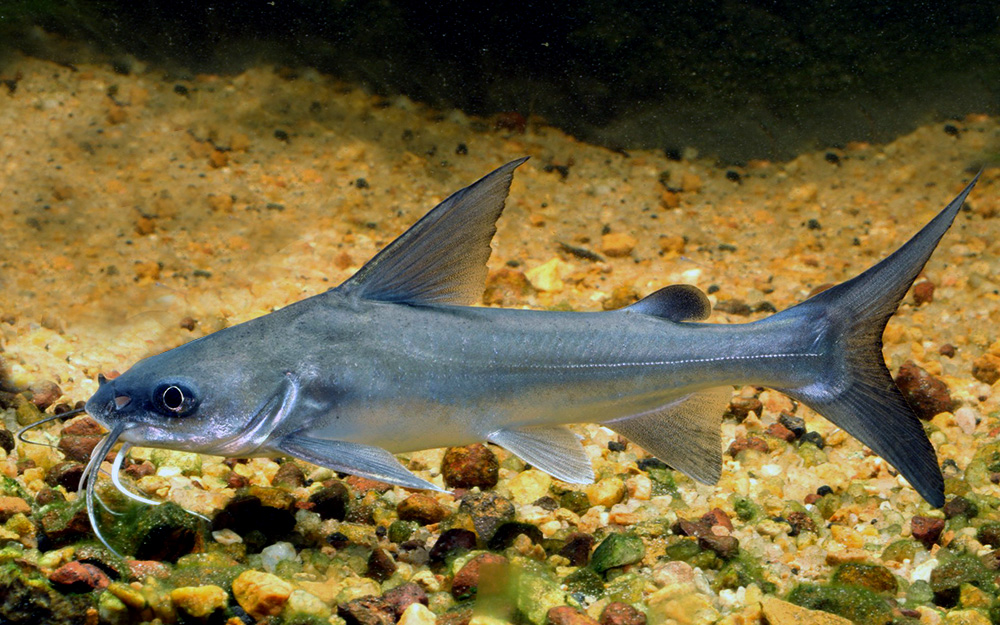Blue salmon catfish
(Neoarius graeffei)

Classification
General data
Neoarius graeffei, or blue salmon catfish, is a species of catfish found in freshwater rivers of Australia and Papua New Guinea. This species is most identifiable by its large, shark-like dorsal fin that is led by a poisonous spine. Like other catfish, the blue salmon catfish is known to use electrical pulses to sense prey in the water. This prey sensing mechanism may be the reason that these catfish are known to eat the land dwelling hopping mouse at a high rate.
This catfish is dusky grey with a bluish tint on the top of its body, while becoming lighter (almost white) closer to its belly.
The maximum length that has been observed is 60 cm, approximately 1.9 feet.
The fish has 4-6 barbels around an average sized mouth. It has a pair of pelvic fins, a pair of pelvic fins, an anal fin (15-19 soft rays), a caudal fin resembling a sharks, an adipose fin, and a tall dorsal fin (7 soft rays). The dorsal fin begins with a sharp spine, and this spine supports the dorsal fin so that it stands out of the water like a sharks dorsal fin. This spine can injure humans handling the fish. The fins are dark, translucent, and darken toward the edges.
This species of catfish mostly inhabits freshwater rivers and lagoons, and prefers waters that are slightly alkaline. It is also known to enter brackish estuaries and coastal marine waters. The species is not necessarily found in schools, but large groups of juveniles are encountered often.











